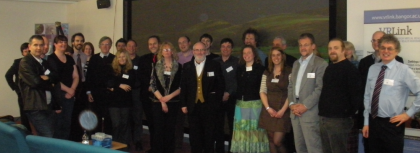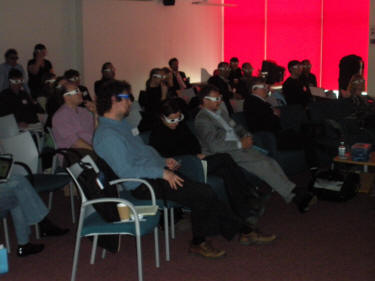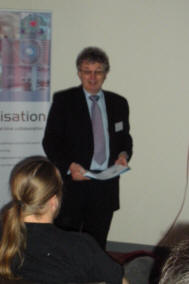Science & Heritage Cluster

Modelling, Interpretation and Alternate Representations:
Visualization technology, Heritage Buildings & Coastal Threats
Event 4. A brief report...

Both days of Event 4 were held in Bangor at Technium CAST at Parc Menai.
Day 1. Jonathan C. Roberts gave a brief introduction and some background information to the event. And briefly introduced vrlink. Emily Bateman (from Gwynedd Archaeology Trust) spoke about some of their projects, especially the use of technology in the projects. Asking questions such as "how can we make more efficient use of technology", and in respect to digital formats and data: "how do we keep it, and what do we keep?". Erin Robinson spoke about the Heather & Hillforts Project, talking about their use of technology such as through audio trails, web presence and social networking sites. Douglas Cawthorne from De Montfort University presented several projects and discussed various problems with archaeological data and its interpretation, saying that we currently store a minute percentage of the data of an archaeological site. Rebecca Ferguson (Open University) talked about the heritage of Second Life; getting us to think of the oldest historic asset in second life itself. Jenny Dickinson (Technium CAST) presented several demonstrations of the Stereo Powerwall in the CAST facility that we were sitting and presented work from the People's collection. Finally, Dyfan Searell demonstrated a hand held laser scanner - giving us a live demonstration of scanning an historic object.
Day 2. Started with Drew Baker (from King's College) entertained us with a talk on Virtual Herigate and intangible cultural assets, and got us to think about the intangible assets of cultural heritage. Ray Karl (Bangor University) provoked us by thinking about Topi (a stereotypical/common-place and standardised prhase, image, example or motive). Should we be always trying to represent and display a concensus view? Probably not. He got us to think about how we could use virtual worlds to display alternative views, and incorporate uncertainty. Kate Boardman (Teeside University) presented the digital Bayeux Tapestry project, that was created in SL. Which later we viewed on the large Powerwall in Second Life. Deri Jones discussed the process of laser scanning - and discussed various challenges and opportunities with this technology. Robert Gittins (Bangor University) chaired a few short presentations. He first gave a short presentation himself of some work of realistic modelling of a real-world scene in SL, then chaired the session. He presented a video of Shelley Hales' (Bristol University) work. John Whittaker (Friars School, Bangor) presented his work on the Virtual School, where he had been using OpenSim. Finally Andrew (Huddersfield University) presented work on huddersfield3d.co.uk.
Jonathan C. Roberts

Looking at the Powerwall - wearing the goggles to see stereo.
 Robert Gittins chairing the final session of day 2.
Robert Gittins chairing the final session of day 2.
Photo Gallery